Jazz Age fun in Norway: Sommerro, Oslo
Sommerro is the latest and swankiest hotel to open in Oslo, says Chris Carter

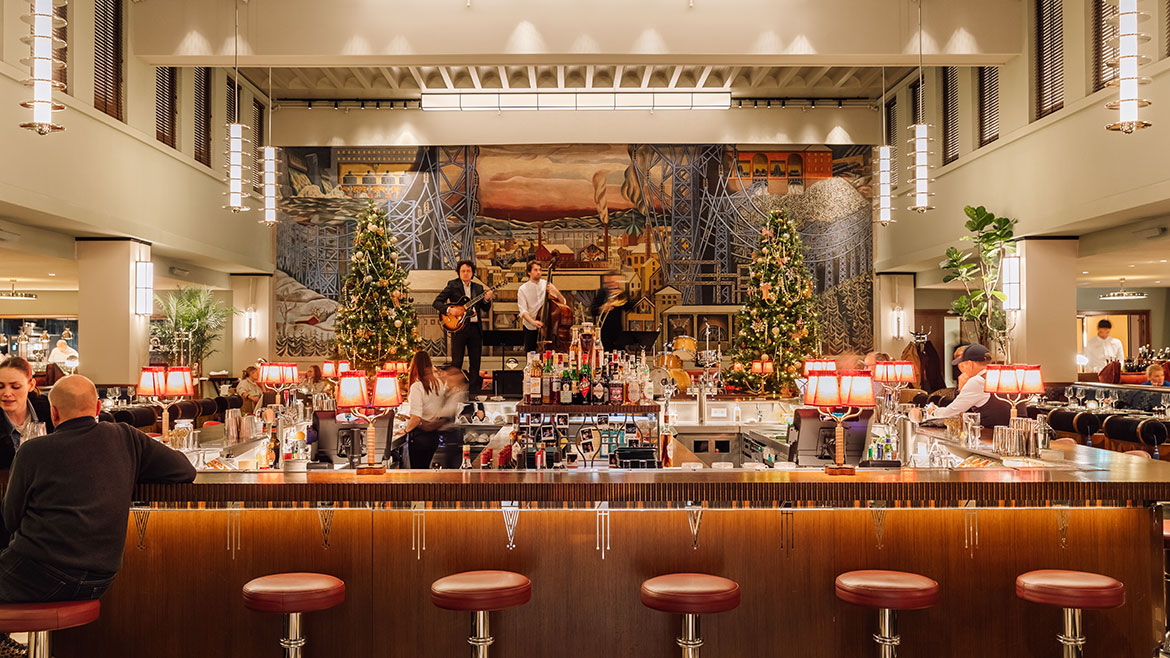
It was like something out of The Great Gatsby. My partner and I had just dropped our bags at Sommerro, Oslo’s newest and most stylish hotel, having arrived in the evening on a Saturday in June.
We stood in the round central stairwell, gazing through the floor-to-ceiling window at Ekspedisjonshallen (pictured top) – the hotel’s main restaurant and bar – mesmerised by the party going on below. It was like a window onto the Jazz Age.
Against the backdrop of the fabulous wall fresco by Norwegian artist Per Krohg of an early 1930s industrial landscape befitting Sommerro’s heritage, the band played in front of a sunken island bar, where the barmen shook their cocktail shakers like maracas to a room full of chatter.
MoneyWeek
Subscribe to MoneyWeek today and get your first six magazine issues absolutely FREE

Sign up to Money Morning
Don't miss the latest investment and personal finances news, market analysis, plus money-saving tips with our free twice-daily newsletter
Don't miss the latest investment and personal finances news, market analysis, plus money-saving tips with our free twice-daily newsletter
The lights were turned down low and the waiters flitted among the rows of people eating and drinking at their tables and around the bar.
A hit with the locals
Sommerro is, after all, the place to come for a night out, judging by the number of well-heeled locals we encountered. Who could blame them?
Sommerro opened in 2022, bringing added glamour to what was already the pretty smart neighbourhood of Frogner, on the west side of the city. Decades before that, the building first opened in 1931 as the headquarters of the Oslo Lysverker electric company.
Utilities took pride in their appearance then and the building is dressed in smart red-brick work and uniform rectangular windows and decorated with bas-reliefs of workers carved into the ground-floor pillars by locally born artist Asbjørg Borgfelt.
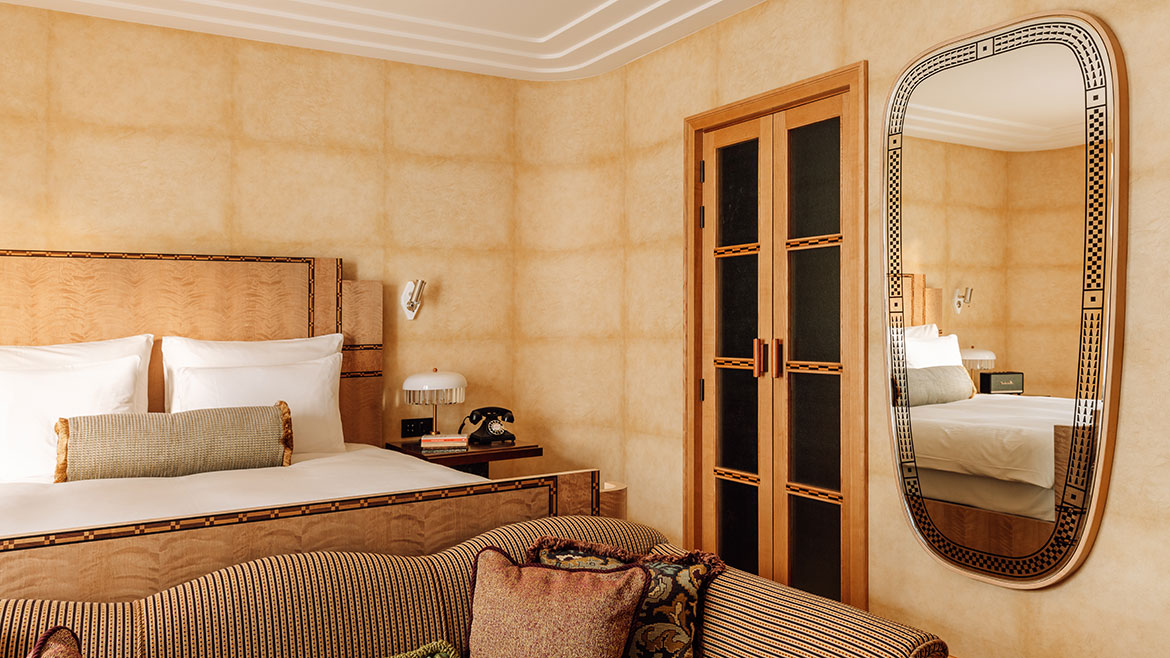
A deluxe bedroom in sepia tones
New York and London-based design studio GrecoDeco (which recently did up trendy London hotel The Ned) has done a wonderful job at keeping the interiors sympathetic to the building’s history.
The chrome-coloured ceiling lights have been fashioned to look like little dangling Tesla coils, for example, and the stairwell we were standing in like a giant one. A night here even feels a little like sleeping in a vintage, sepia-coloured photograph from the 1930s.
The wallpaper in our Deluxe room was a stained-yellowish colour; the light fittings were reminiscent of the period; the bed frame was made from polished birch wood, sporting a chequerboard inlay; and the cabinet housing the minibar displayed beautiful marquetry.
The tiles in the shower in the floor-heated bathroom were a warm orangery hue. Through the bedroom windows, we looked out onto a little park and marvelled at how the sky grew no darker than a light indigo, even in the wee hours.
There are two main reasons why Sommerro is so popular with the locals – aside from being within easy reach of Oslo’s many museums, restaurants and galleries. (It’s worth buying the Oslo Pass, which gets you free and discounted entries. It can be used on public transport and it costs NOK760 (£54) for 48 hours.) One is the food.
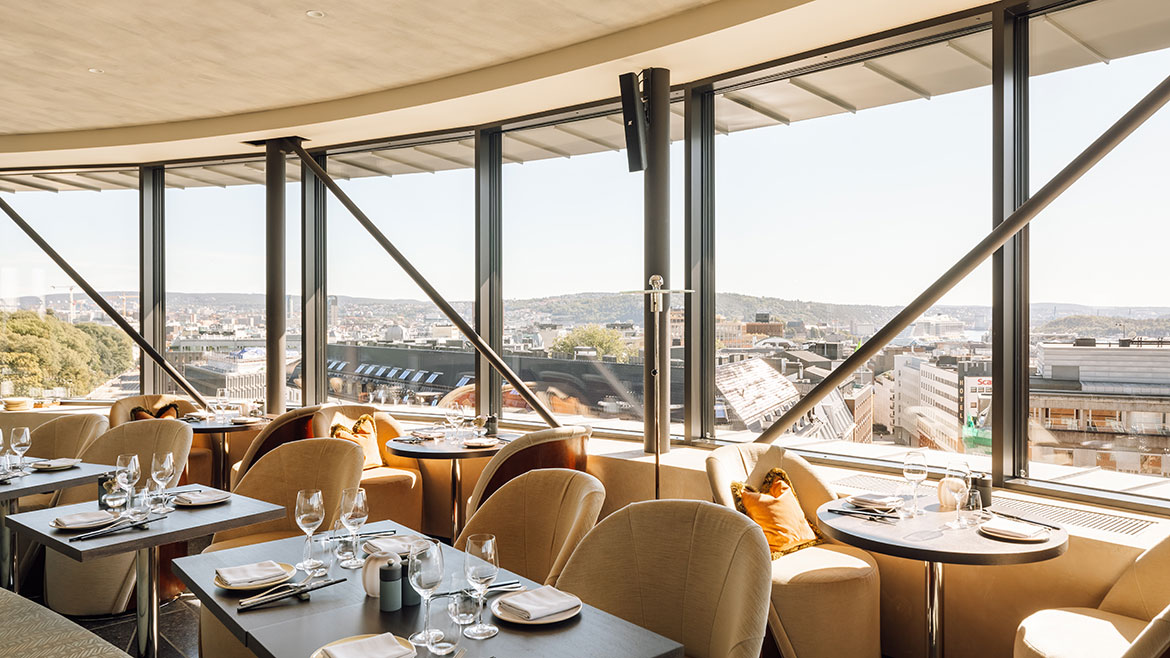
Dine at TAK Oslo with great views over the city
Nordic cuisine with an Asian twist
Ekspedisjonshallen has a bistro-style menu, serving fresh langoustines in the months when they are available and lobsters in the months when they’re not. The steak tartare is a must and it is also available in the roof-top, fine-dining restaurant TAK Oslo, led by the award-winning Swedish chef Frida Ronge.
She has put together a Nordic-Asian fusion menu and it is well worth placing your ordering in her hands. The “Chef’s Choice Menu” opens with a single oyster, served in its shell in a sweet, yet delicate Asian sauce, nesting on a swirl of edible seaweed.
Then came the seared scallops in a lovely mint- and pea-flavoured foam, followed by the tartare that had a consistency a little like rillette, served on toast; halibut in a creamy artichoke butter sauce; and, for dessert, a sweet, little “Tokyo-banana illusion”, coated in yellow chocolate and served with genmaicha (Japanese tea) ice cream.
The Asian theme continues up here above the chimney tops at Izakaya, Sommerro’s light bites eatery and bar. I recommend opting for the maki (rice rolled around a filling). Oslo seems to have claimed these little rolls as its own and you will find them in many places around the city.
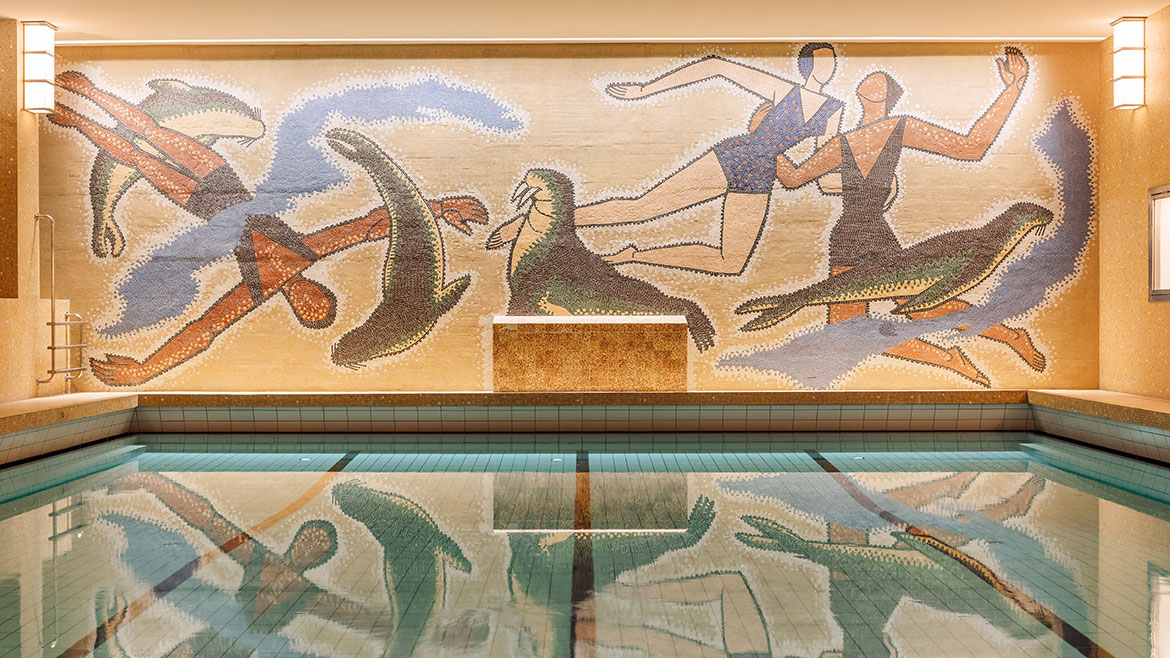
The original mosaic from the 1930s at Vestkantbadet
Bring your swimming cap...
The other reason is Vestkantbadet, the hotel’s basement wellness area. Here, the star attraction is the large mosaic that sits above the pool, depicting three lady swimmers in period costumes and caps, swimming with a handful of seals.
It was created by Krohg for the opening of the baths to the public in 1932. The heads and torsos of the pair of ladies on the right side – “The Two Sisters” – today make up Sommerro’s emblem.
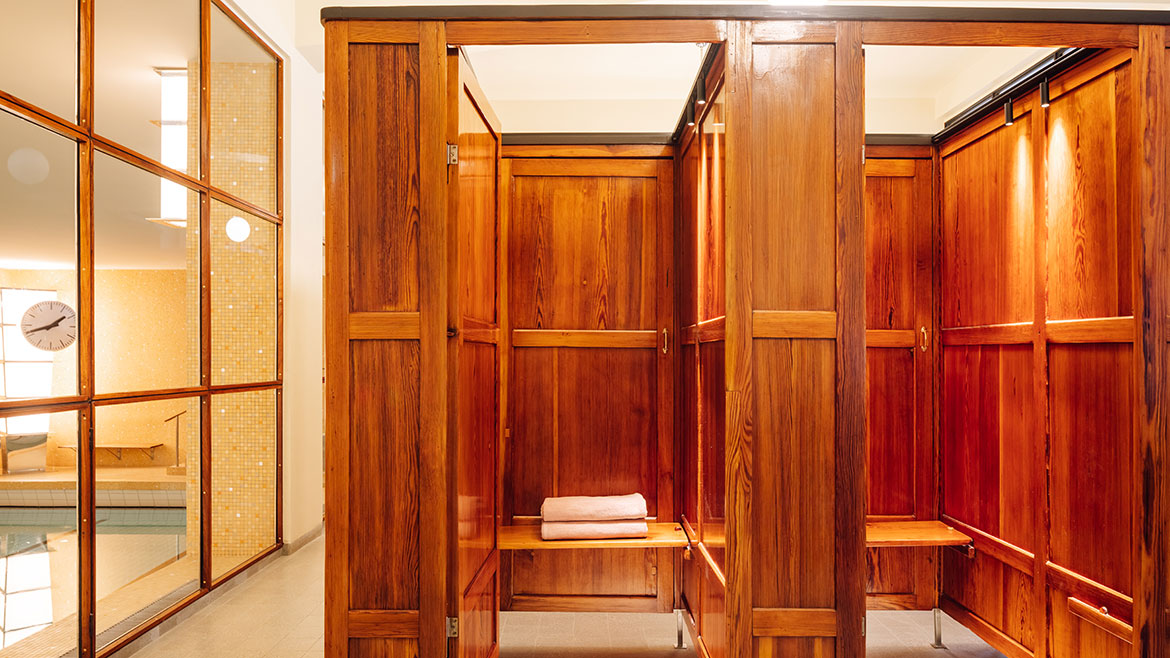
The cubicles are straight out of a Wes Anderson film
While you’re changing, admire the cubicles – admittedly not a sentence you read everyday in a travel article, but they are the originals, hand-sanded ahead of the hotel’s opening. You could be forgiven for thinking you have wandered onto the set of Wes Anderson’s latest quirky adventure.
Chris was a guest of Sommerro. A member of Preferred Hotels & Resorts’ prestigious Legend Collection, rates start from £215 per room per night. The "Chef's Choice Menu" without beverage pairing at TAK Oslo costs NOK995 (£71).
Get the latest financial news, insights and expert analysis from our award-winning MoneyWeek team, to help you understand what really matters when it comes to your finances.

-
 5 investment trusts for your pension
5 investment trusts for your pensionInvestment trusts are often a good choice for long term growth and income options, but which ones should you consider for your pension?
-
 Inheritance tax climbdown as agricultural property relief threshold raised
Inheritance tax climbdown as agricultural property relief threshold raisedReforms to agricultural property relief had sparked strong opposition, and the government has now diluted its controversial inheritance tax plans for farmers
-
 8 of the best houses for sale with beautiful fireplaces
8 of the best houses for sale with beautiful fireplacesThe best houses for sale with beautiful fireplaces – from a 15th-century cottage in Kent to a 17th-century palazzo in Oxfordshire
-
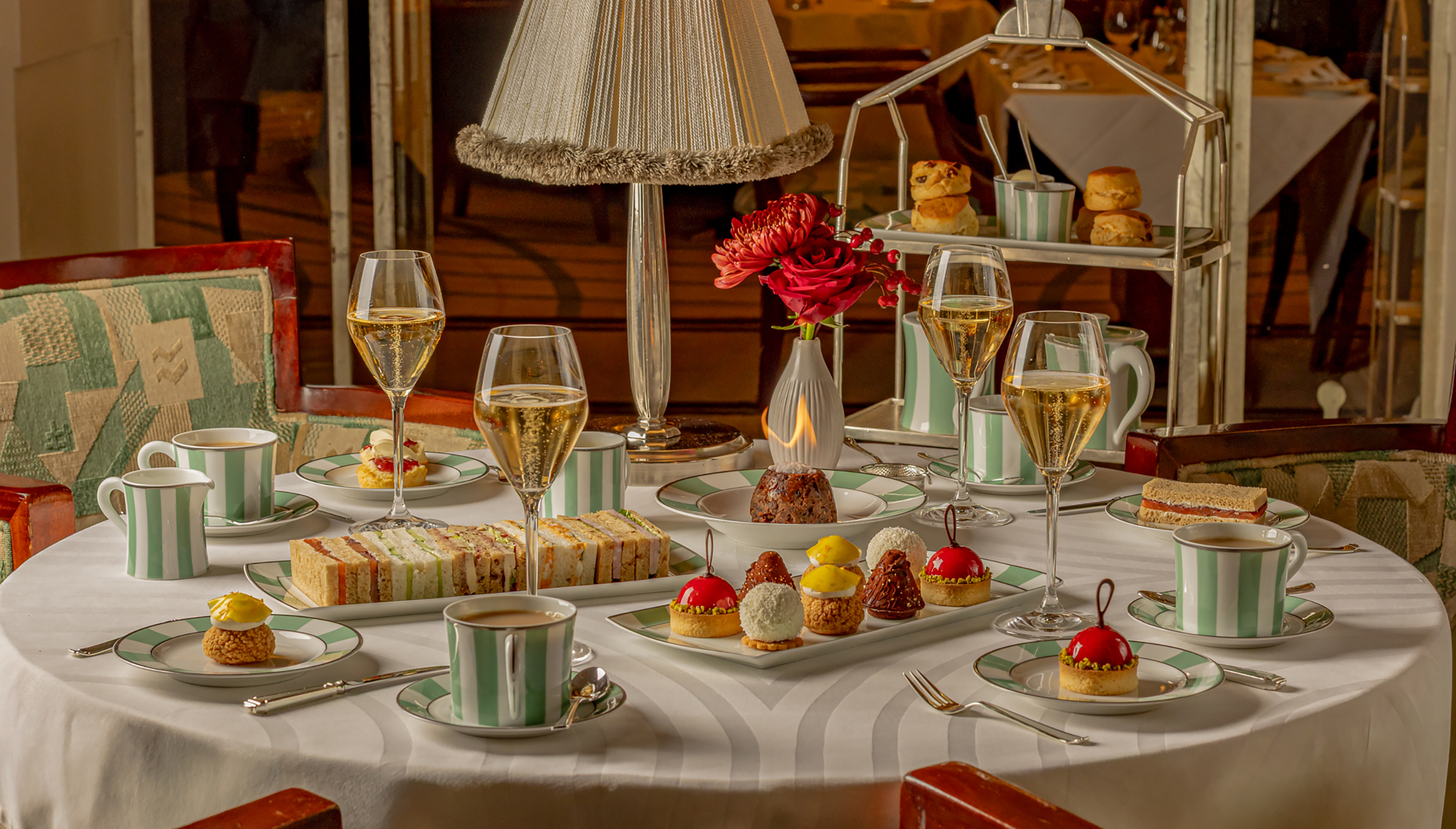 The top last-minute Christmas gifts
The top last-minute Christmas giftsIt’s not too late to give the perfect present this festive season – we round up a selection of last-minute Christmas gifts worth giving
-
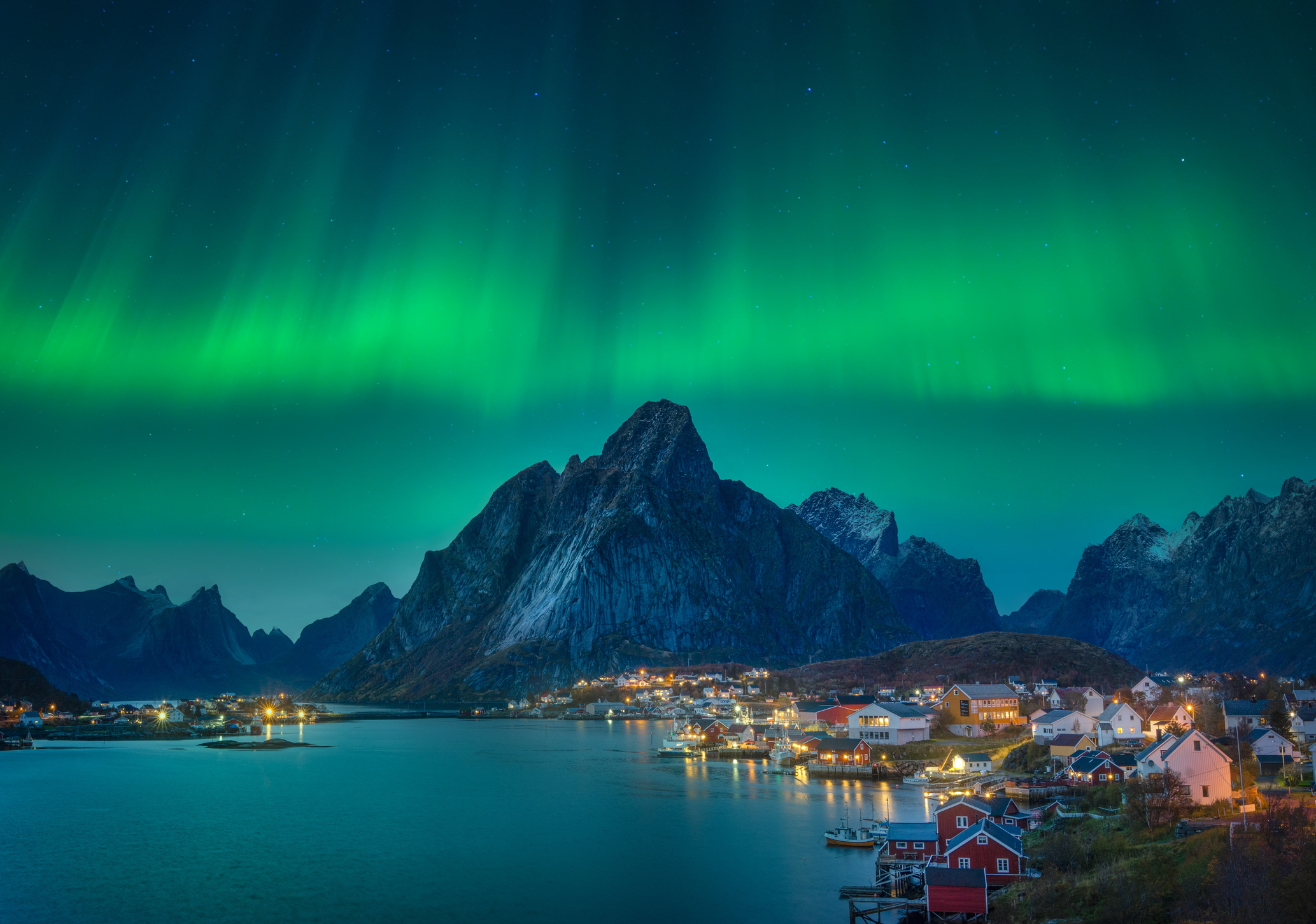 Lights, camera, action: Where to see the Northern Lights
Lights, camera, action: Where to see the Northern LightsThe Northern Lights are the most spectacular they’ve been in years. Here’s where to see them
-
 8 of the best ski chalets for sale now
8 of the best ski chalets for sale nowThe best ski chalets on the market – from a traditional Alpine-style chalet in Switzerland to an award-winning Modernist building in Japan’s exclusive ski areas
-
 The best Christmas gifts for your loved ones
The best Christmas gifts for your loved onesWe round up the best Christmas gifts with a touch of luxury to delight, surprise and amaze family and friends this festive season
-
 The best UK Christmas markets for a wassail of a time
The best UK Christmas markets for a wassail of a timeWe round up the best UK Christmas markets to visit, from London's Hyde Park Winter Wonderland to Edinburgh's Princes Street Gardens
-
 Reinventing the high street – how to invest in the retailers driving the change
Reinventing the high street – how to invest in the retailers driving the changeThe high street brands that can make shopping and leisure an enjoyable experience will thrive, says Maryam Cockar
-
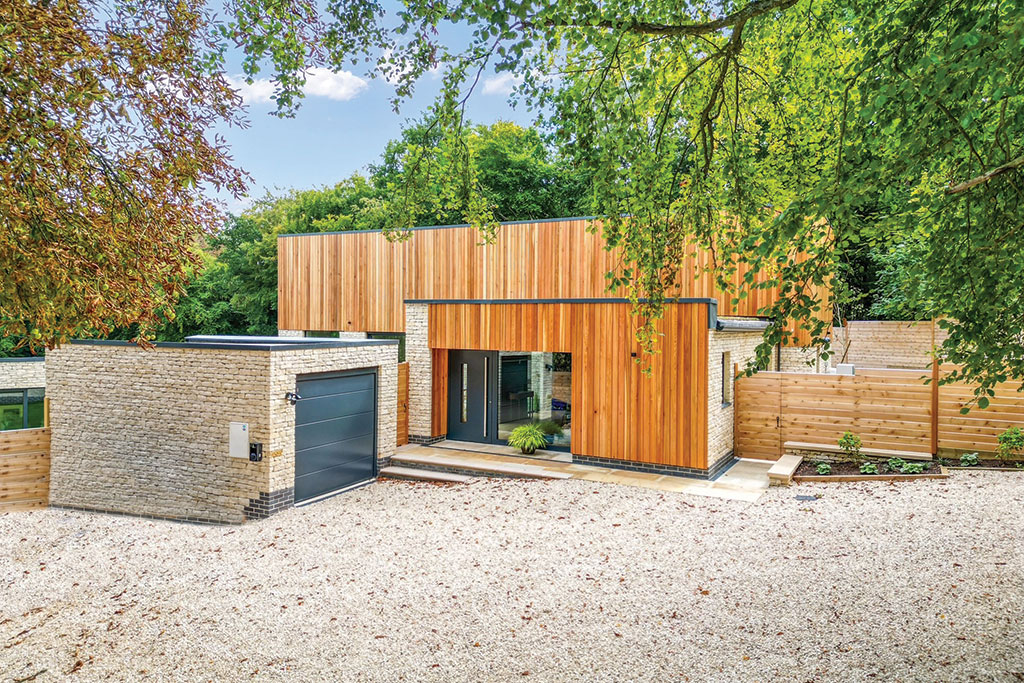 8 of the best houses for sale with electric vehicle charging
8 of the best houses for sale with electric vehicle chargingThe best houses for sale with electric vehicle charging – from a converted World War II control tower in Scotland, to a Victorian country house in Cumbria